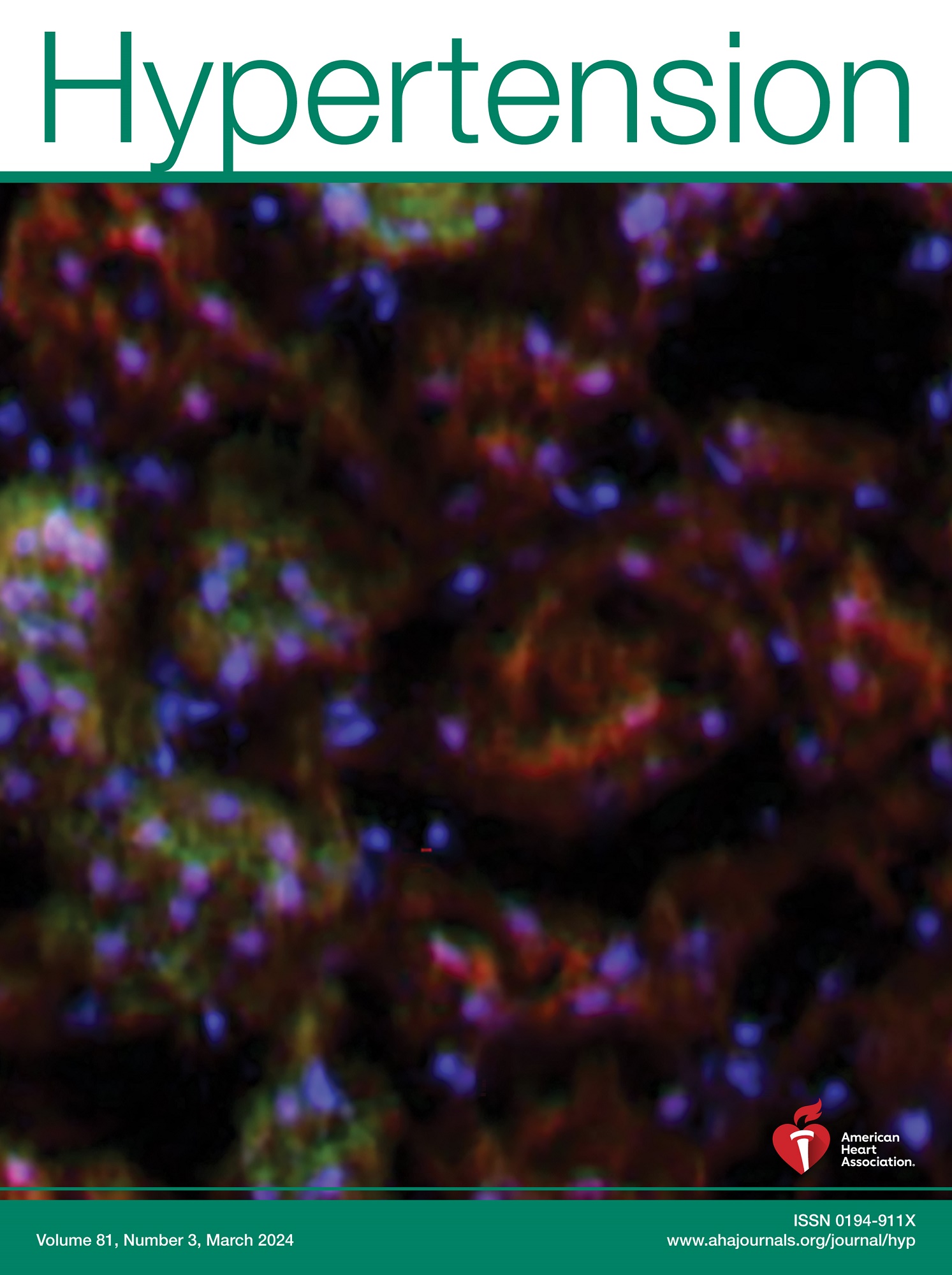Lifetime Cannabis Use and Incident Hypertension: The Coronary Artery Risk Development in Young Adults (CARDIA) Study.
IF 8.2
1区 医学
Q1 PERIPHERAL VASCULAR DISEASE
引用次数: 0
Abstract
BACKGROUND Observational evidence investigating associations between cannabis use and hypertension is inconsistent. METHODS The association between cumulative lifetime cannabis use (cannabis-years) and incident hypertension was examined over 35 years in a sample of CARDIA study (Coronary Artery Risk Development in Young Adults) participants free of hypertension at baseline. Marginal structural models with inverse probability weighting were used to adjust for potential time-dependent confounding and censoring. Hazard ratios and 95% CIs were estimated using Cox proportional hazards regression. Sensitivity analyses included modeling cannabis-years using restricted cubic splines, stratifying the primary analyses by sex, race, alcohol and cigarette smoking, and evaluating an additional exposure measure (days of use in the past month). RESULTS The analytic sample consisted of 4328 participants at baseline and 64.9% (n=2810) at year 35. Median cannabis-years increased minimally and remained low across visits: 0.0 (Q1-Q3, 0.0-0.3) at baseline and 0.2 (Q1-Q3, 0.0-0.7) by year 35. There were 2478 cases of incident hypertension over 88 292 person-years (28.1 cases per 1000 person-years). Cannabis-years were not significantly associated with incident hypertension (adjusted hazard ratio, 0.99 [95% CI, 0.97-1.00]; P=0.18). The association remained unchanged in sensitivity analyses. CONCLUSIONS In a cohort of Black and White young adults with 35 years of follow-up, no association was found between cumulative lifetime use of cannabis and risk of incident hypertension. This finding was robust to restricted cubic spline analyses, analyses stratified by sex, race, alcohol use and tobacco cigarette smoking, and an additional measure of exposure (days of use in the past month).终生使用大麻和高血压事件:年轻人冠状动脉风险发展(CARDIA)研究。
背景:调查大麻使用与高血压之间关系的观察性证据并不一致。方法:在基线无高血压的CARDIA研究(年轻成人冠状动脉风险发展)参与者中,研究了35年来累积终生大麻使用(大麻年)与高血压事件之间的关系。使用具有逆概率加权的边际结构模型来调整潜在的时间相关混淆和删减。使用Cox比例风险回归估计风险比和95% ci。敏感性分析包括使用限制三次样条对大麻年进行建模,按性别、种族、酒精和吸烟情况对主要分析进行分层,并评估额外的暴露测量(过去一个月的使用天数)。结果分析样本在基线时为4328名参与者,在35岁时为64.9% (n=2810)。中位数大麻年增加最小,并且在每次访问中保持低水平:基线时为0.0 (Q1-Q3, 0.0-0.3),第35年为0.2 (Q1-Q3, 0.0-0.7)。88292人年共发生2478例高血压(每1000人年28.1例)。大麻年与高血压事件无显著相关(校正风险比为0.99 [95% CI, 0.97-1.00];P = 0.18)。这种关联在敏感性分析中保持不变。结论在一组黑人和白人年轻人的35年随访中,未发现累积终生大麻使用与高血压发生风险之间的关联。这一发现在限制性三次样条分析、按性别、种族、饮酒和吸烟情况分层的分析以及额外的暴露测量(过去一个月的使用天数)中都是可靠的。
本文章由计算机程序翻译,如有差异,请以英文原文为准。
求助全文
约1分钟内获得全文
求助全文
来源期刊

Hypertension
医学-外周血管病
CiteScore
15.90
自引率
4.80%
发文量
1006
审稿时长
1 months
期刊介绍:
Hypertension presents top-tier articles on high blood pressure in each monthly release. These articles delve into basic science, clinical treatment, and prevention of hypertension and associated cardiovascular, metabolic, and renal conditions. Renowned for their lasting significance, these papers contribute to advancing our understanding and management of hypertension-related issues.
 求助内容:
求助内容: 应助结果提醒方式:
应助结果提醒方式:


